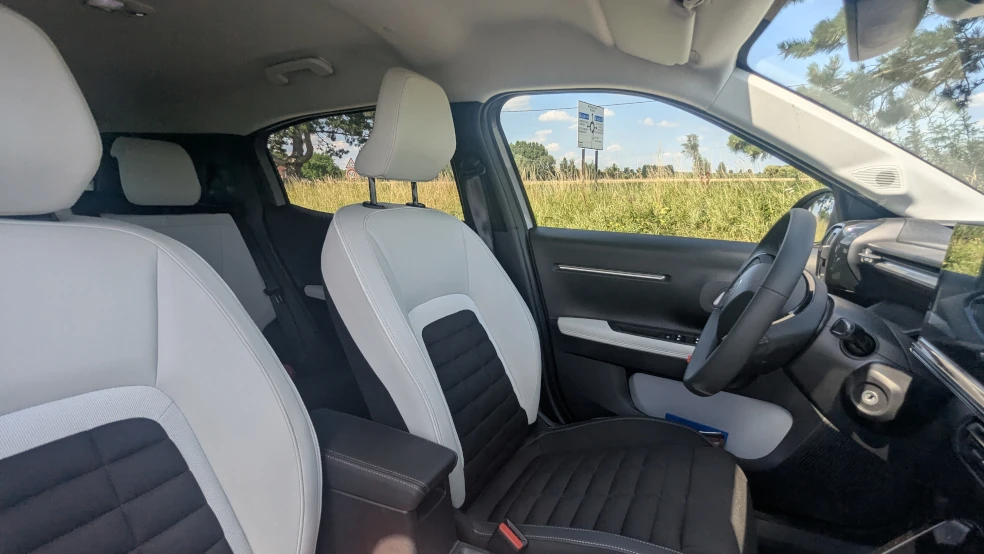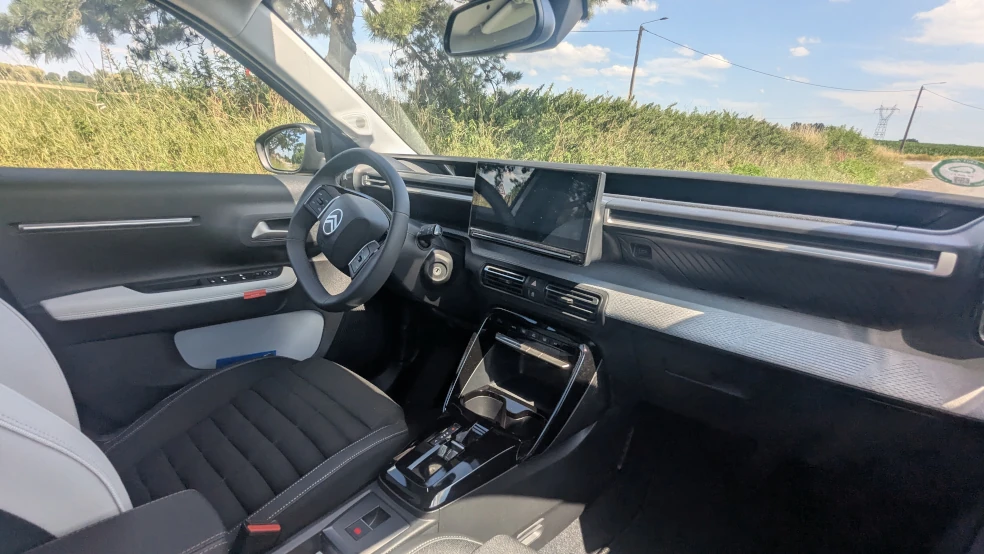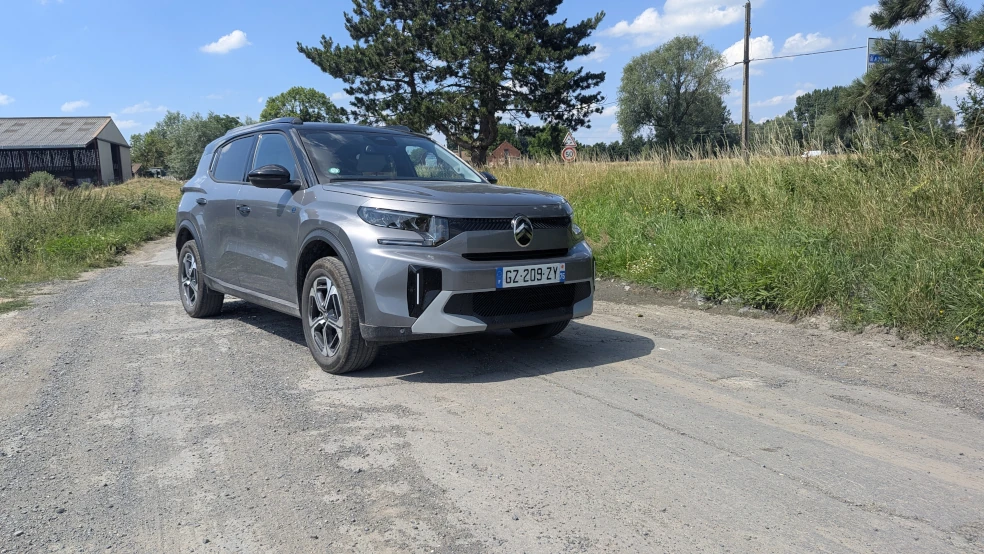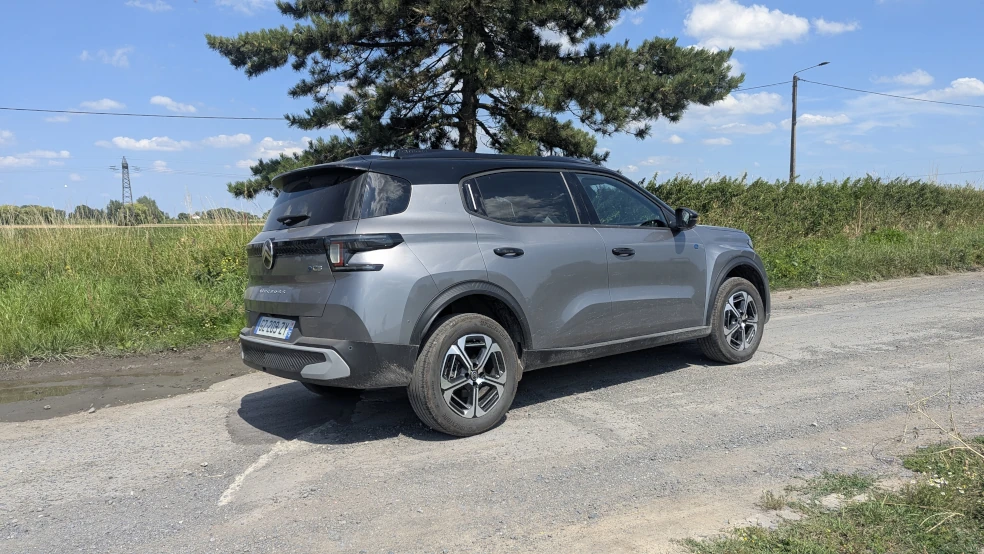[Review] Citroën C3 Aircross electric: convincing on a daily basis, just on the motorway
- Jérémy

- Jul 18, 2025
- 5 min read

The second generation of the C3 Aircross arrived in dealerships a few weeks ago. Unlike the first generation, which was somewhat hesitant between SUV and MPV, the new model is clearly a pure urban SUV. It has grown significantly to almost 4.4 metres in order to offer great versatility. Above all, the C3 Aircross offers a range of engines. After testing the petrol and hybrid versions, here is the electric version, which uses the same engine and battery as the C3 and has an announced range of 300 km. So, what is the ë-C3 Aircross really like?
A very distinctive style.
Externally, the electric version is identical to the other engines, except for the 'Ë' badges on the front doors and tailgate. Otherwise, the three engines offered on this C3 Aircross are identical. The result is a car with the distinct personality of a true SUV, particularly at the front, thanks to the widened fenders that maximise this new generation of C3 Aircross's aggressive, purposeful look and give it a unique identity, while sharing the bonnet and headlights with the C3.
The C3 Aircross is very spacious and embodies Citroën's new style of horizontal and vertical lines. This is clearly evident in the nearly flat roof that ends in a nearly vertical tailgate, which maximises interior space for an SUV offering 5- and 7-seater versions. In profile, it is a very square car that suggests excellent habitability, setting it apart from its competitors to the extent that the Renault Captur and Peugeot 2008 seem to be in a different category, despite their similar dimensions. Citroën is therefore making a unique proposition in the B-SUV segment, demonstrating its desire to innovate and bring new silhouettes to each segment, as evidenced by this C3 Aircross.
The differences at the rear are more significant between this C3 Aircross and the C3, since unlike the front, no elements are shared between the two cars. The lights adopt the new visual signature of Citroën, featuring three luminous points linked by a black band with chevron striations, bearing the new Citroën emblem in the centre.
There are no significant differences between the electric and hybrid versions of the C3 Aircross inside. Both feature the same horizontal dashboard, which doesn't encroach on the front space, creating a pleasantly spacious interior. The seats are identical and pleasantly soft with light backrests, which make the interior of the C3 Aircross feel bright and welcoming.
The spacious exterior design suggests a similarly spacious interior, and the C3 Aircross offers an exceptionally spacious cabin with ample knee room for rear passengers, whether they are tall or short. They can also enjoy a soft bench seat that provides excellent seating comfort. On this electric version, the floor is slightly raised, as is the case with all electric cars. However, the impact on the seating position is minimal here, as the bench seat supports the thighs well up to the knees, which do not end up near the chin when seated, as is sometimes the case with certain electric cars. The seating position here is therefore quite the opposite, with beautiful seating and absolutely regal front and rear habitability. This is certainly one of the main qualities of this C3 Aircross. The boot is not impacted by the presence of the battery and offers a volume of 460 litres. The double floor ensures a flat loading threshold for everyday use and allows more space for loading suitcases, for example. This won't be a problem as the boot is generous and easy to use thanks to its square shape. However, you will have to manage the charging cables yourself as there is no storage space provided, not even a frunk at the front. This is the only negative point of this electric C3 Aircross.
On the road, the performance was better than expected.
Before getting behind the wheel, I was worried that the C3's 113 hp engine might struggle with the weight of the C3 Aircross, but I hadn't taken into account the advantages of electric motors, where torque and power are immediately available. While the C3 Aircross is by no means a lightning bolt of war, the acceleration is satisfactory when driven sensibly and allows you to easily merge into traffic on all types of terrain, whether you're driving alone or fully loaded — a positive point.
We therefore rediscover the sensations provided by the electric C3: an extremely simple and easy drive that lives up to Citroën's promise of 360° comfort. The mental load is reduced thanks to the relevant information displayed on the small screen at the base of the windscreen. This information is always clearly visible and is reduced to what's essential for driving — exactly what we need. There's no fuss or 3D screen that we never look at; just concrete, basic features ensuring extremely pleasant ease of use.
In terms of comfort, the electric C3 Aircross is no exception and provides impressive ride comfort. There is a tiny bit of firmness on the rear axle due to the battery, but the C3 Aircross's overall comfort level is truly excellent, ensuring the best possible travel conditions for passengers. In addition, the road holding is also very good. The soft suspension ensures a certain level of roll, but the double stops ensure the wheels are firmly planted on the ground at all times, providing the best possible road holding.
With the same 44 kWh battery as the C3, the electric C3 Aircross has a range of 300 km in the WLTP cycle. This equates to an average consumption of 14.67 kWh per 100 km, as approved by Citroën. It is not possible to verify this, since the C3 Aircross's on-board computer does not display average consumption. However, my own measurements show an average consumption of around 16 kWh on national roads, ensuring a range of 260 km. On the motorway, limiting myself to 110–120 km/h, I obtained an average of 18 kWh, i.e. a maximum range of 240 km. This is clearly insufficient for a versatile SUV, limiting its use to urban or peri-urban areas, even though it could be the household's first car. However, recharging is quick thanks to a power of 100 kW, ensuring a recharge from 20% to 80% in only 30 minutes. Therefore, recharge stops will be short, albeit frequent, but the range is still too short. The 400 km version is preferable if highway use is essential, especially since it is only €2,000 more expensive. Moreover, the much more expensive Peugeot 2008 and Kia EV3 do not allow long-distance motorway use, but are certainly less habitable and less comfortable, and cost around €6,000 more!
In conclusion, the electric C3 Aircross is not much different from its petrol or hybrid counterparts in terms of aesthetics, but its electric motorisation provides unparalleled driving smoothness by eliminating noise and vibrations, thus enhancing driving comfort and magnifying the overall comfort of this second-generation urban SUV. Its autonomy will be sufficient for urban and peri-urban use on a daily basis, but it will not be suitable for those who use it as their main car and therefore go on holiday in it. However, as we have seen, its direct competitors are no better and cost much more. The C3 Aircross's ultimate selling point is its price, which is unbeatable at over €29,000 for the Max finish, excluding possible aid. It comes with generous standard equipment, first-rate comfort and ample space for all passengers, who will enjoy the best travel conditions every day. Isn't that the most important thing?












Comments